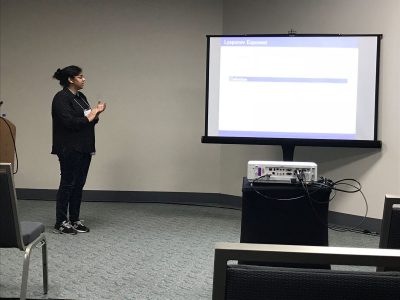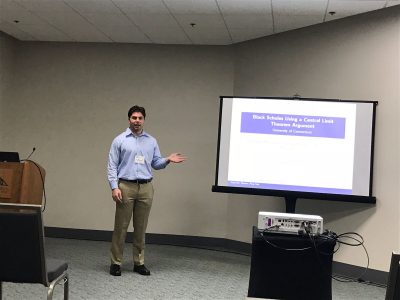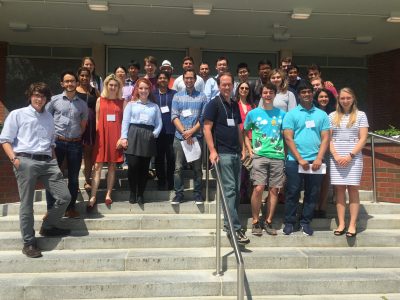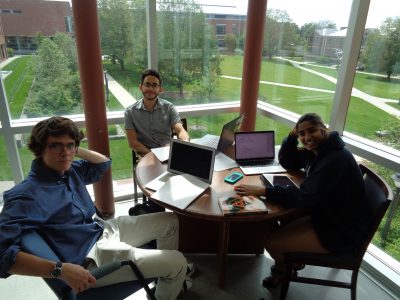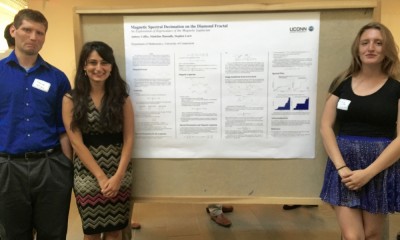Group Members
Cory McCartan, Laura LeGare, Caitlin Davis.
Supervisors
Overview
Geodesics (shortest paths) on manifolds such as planes and spheres are well understood. Geodesics on fractal sets such as the Sierpinski Triangle are much more complicated. We begin by constructing algorithms for building shortest paths and provide explicit formulas for computing their lengths. We then turn to the question of interpolation along geodesics—given two subsets of the Sierpinski Triangle, we “slide” points in one set along geodesics to the other set. We construct a measure along the interpolated sets which formalizes a notion of the interpolation of a distribution of mass, and we prove interesting self-similarity relations about this measure.
Publication: J. Fractal Geom. 8 (2021), 117-152 doi.org/10.4171/JFG/100 arXiv:1912.06698
Presentation
Poster
